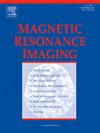Can arginine, glutamate and glutamine serve as surrogates of intestinal mucosal healing in the patients with celiac disease following gluten-free diet? An NMR based metabolomics study
IF 2
4区 医学
Q2 RADIOLOGY, NUCLEAR MEDICINE & MEDICAL IMAGING
引用次数: 0
Abstract
Celiac disease (CeD) is a chronic small intestinal autoimmune disease initiated by dietary gluten in genetically predisposed individuals. Till date, the only effective treatment for CeD is the gluten-free diet (GFD). However, not all patients achieve full histological recovery despite GFD. Thus, it is crucial to assess the treatment response and improvement in the villous architecture following GFD. Therefore, present study investigated the potential of NMR-based metabolomics for identifying non-invasive biomarkers for assessing treatment response. Comprehensive metabolic profiling of 120 biological samples comprising of small intestinal mucosal biopsies, blood plasmas and urines collected at two time points (before and after 6–8 months of GFD) from CeD patients (n = 20) was carried out using proton NMR spectroscopy. The levels of arginine glutamate, and glutamine were significantly reduced in both intestinal mucosa and blood plasma of CeD patients after GFD compared to their baseline values. These amino acids play an important role in intestinal energy metabolism, and alleviating inflammation, thereby contributing to healing mechanisms of small intestinal mucosa, following GFD. A logistic regression statistical model based on the combination of the above three blood plasma metabolites demonstrated AUC of 0.980, Youden index 0.900 with a sensitivity and a specificity of 90 % and 100 % for monitoring treatment response in CeD patients after GFD. The study revealed a panel of non-invasive plasma biomarkers (arginine, glutamate and glutamine) which may serve as surrogates of mucosal healing and treatment response in CeD patients, however, the findings need to be validated in a large cohort of patients.
精氨酸、谷氨酸和谷氨酰胺能否作为乳糜泻患者无谷蛋白饮食后肠黏膜愈合的替代物?基于核磁共振的代谢组学研究
乳糜泻(CeD)是一种慢性小肠自身免疫性疾病,在遗传易感个体中由膳食麸质引发。迄今为止,唯一有效的治疗CeD是无麸质饮食(GFD)。然而,并不是所有的患者都能获得完全的组织学恢复。因此,评估GFD后绒毛结构的治疗反应和改善是至关重要的。因此,本研究探讨了基于核磁共振的代谢组学在鉴定非侵入性生物标志物以评估治疗反应方面的潜力。采用质子核磁共振波谱对20例CeD患者(n = 20)在两个时间点(GFD前6-8个月和之后)采集的120份生物样本进行综合代谢谱分析,包括小肠粘膜活检、血浆和尿液。与基线值相比,GFD后CeD患者肠黏膜和血浆中的精氨酸谷氨酸和谷氨酰胺水平均显著降低。这些氨基酸在肠道能量代谢和减轻炎症中发挥重要作用,从而有助于小肠黏膜在GFD后的愈合机制。结合上述3种血浆代谢物建立的logistic回归统计模型显示,监测GFD后CeD患者治疗反应的AUC为0.980,约登指数为0.900,敏感性为90%,特异性为100%。该研究揭示了一组非侵入性血浆生物标志物(精氨酸、谷氨酸和谷氨酰胺),可作为CeD患者粘膜愈合和治疗反应的替代品,然而,研究结果需要在大量患者中进行验证。
本文章由计算机程序翻译,如有差异,请以英文原文为准。
求助全文
约1分钟内获得全文
求助全文
来源期刊

Magnetic resonance imaging
医学-核医学
CiteScore
4.70
自引率
4.00%
发文量
194
审稿时长
83 days
期刊介绍:
Magnetic Resonance Imaging (MRI) is the first international multidisciplinary journal encompassing physical, life, and clinical science investigations as they relate to the development and use of magnetic resonance imaging. MRI is dedicated to both basic research, technological innovation and applications, providing a single forum for communication among radiologists, physicists, chemists, biochemists, biologists, engineers, internists, pathologists, physiologists, computer scientists, and mathematicians.
 求助内容:
求助内容: 应助结果提醒方式:
应助结果提醒方式:


